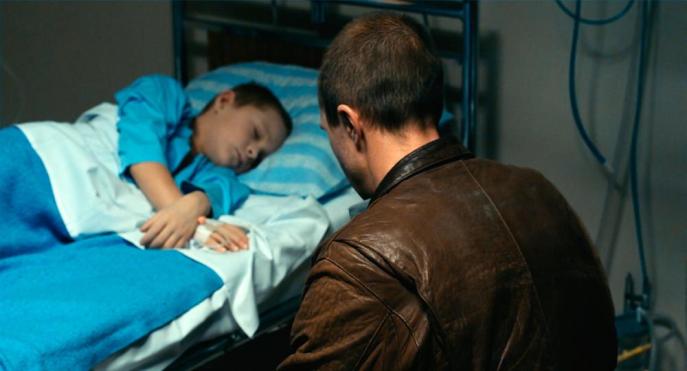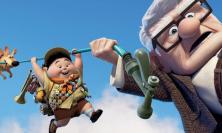Director: Jesper Ganslandt
Starring: Olle Sarri, Francoise Joyce, Niclas Gillis, Sean Pietrulewicz
Certificate: Unrated (81 mins)
One of the films premiered at the London International Film Festival this autumn was a dark spark, Apan (‘The Ape’), by new Swedish director Jesper Ganslandt. Given the nature of the distribution system in the UK (see reviews passim), it’s not on general release, and won’t get much of a showing even in the art-houses: but if it comes near you, go and see it. It’s one of the most interesting pieces this reviewer has seen in the last five years, and certainly one of the most memorable.
Memorable. There’s a dangerous word in a review. But it is exactly that – The Ape is a sustained study in alienation, guilt, male rage and psychological fracture (with a whiff of misogyny). Though Ganslandt is reported to have drawn on Mike Leigh’s work, this piece has its roots deeply embedded in Dostoyevsky, Edvard Munch, Ibsen and Strindberg, not to mention Ingmar Bergman. Take a male character from a Munch painting, one of the lesser known ones, like ‘Golgotha‘ (1900) or ‘Evening on Karl Johan Street’ (1893), and imagine that man now walking around modern Stockholm. Follow him with a steady-cam, and you get The Ape.
The sense of fracture is added to by the team’s decision to use Leigh’s improvisational technique, in which actors are not told the whole plot, but given a general guidance as to the emotions, feelings or impressions that are to be delivered in a particular scene. I’ve never been entirely convinced of that as a method of collective endeavour (it seems to me rather to disempower the actors), however, in this case it creates a performance from Olle Sarri that is eerie, disconnected, and disturbing.
Like the character, the plot is also in pieces. In another film, this would be a clear weakness, but here the unexplained events and disconnected actions cohere with The Ape’s chilling sense of fracture and alienation. It opens with Sarri asleep on the bathroom floor, with a smear of blood on him. His? Someone else’s? Why is he in the bathroom? Why asleep if wounded? How could he sleep if he’s shed blood? Then he cycles around Stockholm. Then he gives a driving lesson. Then he goes to the DIY shop to buy those indices of filmic murder: industrial-sized sheets of polythene, and bright yellow power-saws...
Then other questions: who is the little boy? Whose is the boy? Why and how did he get wounded? Why does he visit his mum? What happens to her? And so it goes on, tracking his morbidly isolated and broken life – an exemplar of masculine dysfunction, all flashes of rage, pent-up fear and love, chopped-up dialogue (the threat of chopped-up people) and empty sentences filled with missing words.
Then there is the repeated use of a hand-held tracking dolly-shot, taken from slightly above and behind the protagonist’s head, moving with him as he paces through Stockholm, avoiding the bloody truth left at home (which we do finally get to see). It’s a kind of X-Box or game-player’s eye-view of the world, an evening spent watching an avatar relentlessly move around a fantasy set, looking for violence and meeting it here and there; a really nice use of the visual language of the new media to project a particular image of modern masculinity, one quite proper to this nightmare vision of manhood snapping, unable to cope with reality.
The Ape is a film that stays in the mind: it is disciplined, well-considered, innovative and emotionally convincing film-making. The audience at the BFI where I saw it all left in silence, and it’s not often that happens. Not, however, a film for a first date. But maybe for a last one...
And we never find out what happened to his mother...
Ambrose Hogan
![]() Visit the IMDB page for this film
Visit the IMDB page for this film






